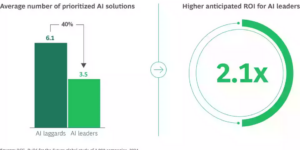Late last year, State Farm’s chief executive broke the news that the auto giant would record the largest underwriting loss in its 100-year history for 2022. On Monday, the news became official with a huge number attached: $13 billion.
“We missed severity badly. We did not anticipate the inflationary pressures,” said State Farm CEO Michael Tipsord at the Property/Casualty Insurance Joint Industry Forum last year.
“In 2022, State Farm’s auto insurance companies reported record underwriting losses due to rapidly increasing claims severity and significant additions to prior accident year incurred claims,” State Farm reported in a media statement this week, without disclosing the magnitude of the prior-year reserve charges.
By the numbers, the auto companies recorded earned premium of $45.7 billion. Incurred claims and loss adjustment expenses were $48.4 billion and other underwriting expenses totaled $10.8 billion. While earned premiums were 10.1 percent higher in 2022 than 2021, the underwriting loss landed at an eye-popping $13.4 billion.
Even though other P/C lines—homeowners, commercial multiple peril and other lines—generated an underwriting profit of $849 million, the auto loss dominated results, with auto representing 61 percent of written premiums and the other P/C lines 37 percent.
State Farm’s 2021 auto underwriting loss—$3.5 billion—also paled by comparison to the staggering number booked for 2022.
In total, State Farm said that the P/C group of companies reported a combined underwriting loss of $13.2 billion on earned premium of $74.3 billion. The 2022 underwriting loss, combined with investment and other income of $4.9 billion, resulted in a P/C pre-tax operating loss of $8.3 billion compared to a $313 million loss reported in 2021 and the $4.5 billion profit reported in 2020.
Total revenue, which includes premium revenue, earned investment income, and realized capital gains and losses, was $89.3 billion for 2022, up 8.6 percent from $82.2 billion for 2021.
Bottom line: State Farm reported a net loss of $6.7 billion in 2022 compared to $1.3 billion of net income in 2021.
The media statement about last year’s financial results stressed the financial strength of State Farm Mutual Automobile Insurance Company in spite of unfavorable operating results. The net worth for State Farm Mutual Automobile Insurance Company ended the year at $131.2 billion, the statement said. While the figure was lower than $143.2 billion at year-end 2021 and $126.1 billion at year-end 2020, the change during 2022 reflects a decline in the value of the P/C companies’ unaffiliated stock portfolio, driven by decreases in the U.S. equities market, in addition to the operating loss.
“While 2022 was a year of significant growth at State Farm, our annual operating results were not at the level we expect as we consider each affiliate’s financial strength and long-term performance. At the same time, the organization remains financially strong,” said Senior Vice President, Treasurer and Chief Financial Officer Jon Farney. “We’re pleased we could assist our customers during the pandemic and we’re there to help them navigate the current period of high inflation. As we take actions to improve our operating performance, we look forward to helping more people in more ways as we begin our next 100 years.”
According to the statement, the State Farm life insurance companies paid out nearly $600 million in dividends to policyholders and issued a record $110 billion in new policy volume, bringing the year-end 2022 individual life insurance in-force to $1.1 trillion.
The two life companies, State Farm Life Insurance Company and State Farm Life and Accident Assurance Company, reported premium income of $6.2 billion and net income for 2022 was $588 million.
The State Farm insurance operations consist of 13 P/C companies and two life insurers, each of which is managed on an individual affiliate level. In addition to auto, homeowners and CMP, the P/C companies are also engaged in health and reinsurance lines of business. The life companies are primarily engaged in individual life insurance and annuity business.
In addition, State Farm group makes third-party mutual funds and third-party banking products available through affiliated State Farm companies that act as intermediaries between the third parties and State Farm customers.





















 Lemonade: 700K Customers on the Car Waitlist
Lemonade: 700K Customers on the Car Waitlist  Poor Background Music Choices Can Negatively Impact Work Performance
Poor Background Music Choices Can Negatively Impact Work Performance  Is State Farm General a Sinking Ship? California Emergency Rate Request Dropped to 17%
Is State Farm General a Sinking Ship? California Emergency Rate Request Dropped to 17%  The Future of the Insurance Customer Experience Is Unity, Personalization
The Future of the Insurance Customer Experience Is Unity, Personalization 











